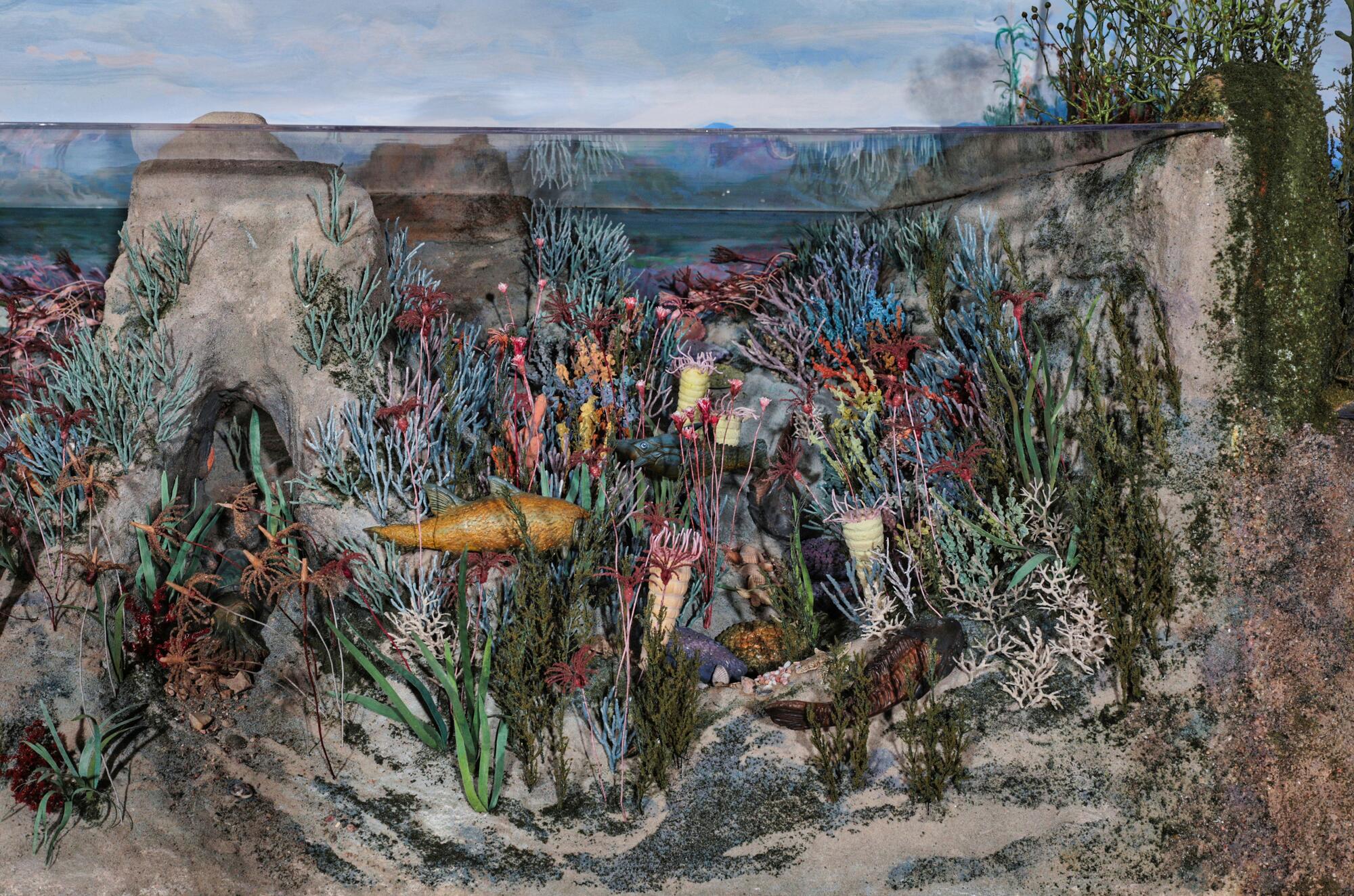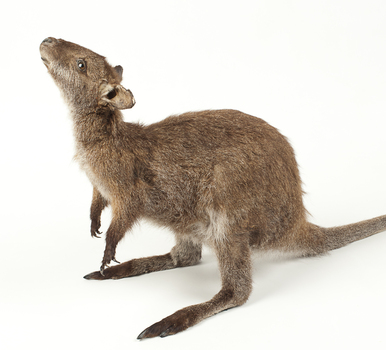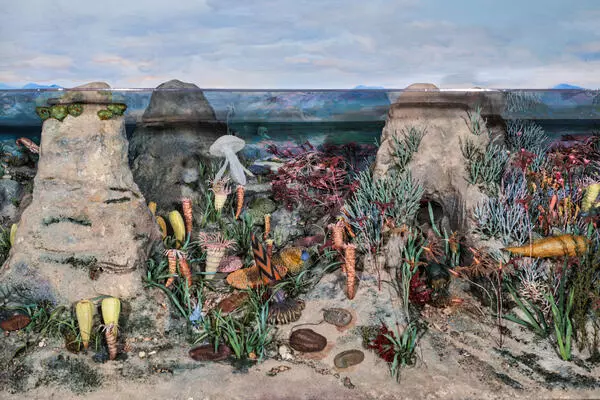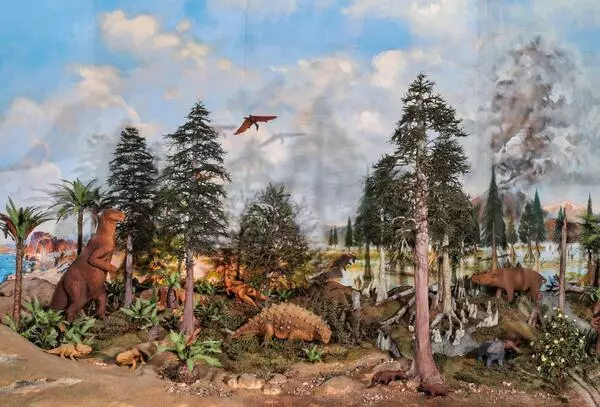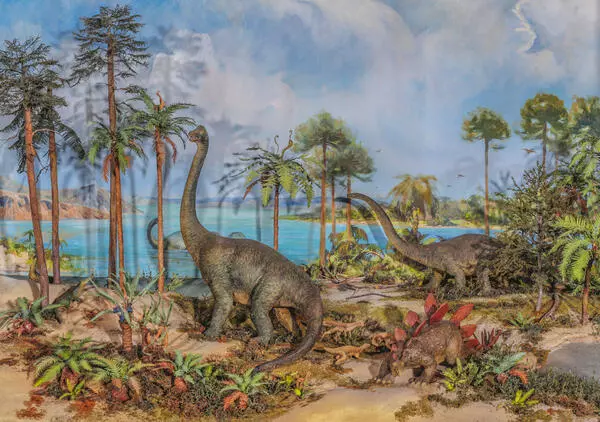The shortest period of the Paleozoic era was the Silurian, which began about 443 million years ago. It owes its name to the ancient Celtic tribe of the Silurians, who lived on the territory of Wales in the Iron Age.
The Silurian period began after the Ordovician glaciation, which led to the death of many heat-loving organisms However, after the end of the Ice age, there was a real breakthrough in life development on Earth.
In the Silurian period, the living world became more diverse with the appearance of new groups of plants and animals. Corals, ostracods (small crustaceans in a bivalve shell), mollusks, bryozoans, brachiopods, and sea lilies lived at the bottom of the sea.
New groups of fish-like jawless agnates appeared. They swam slowly, rubbing their shells on rocks and sand. Their cover consisted of dentin, like human teeth, and the agnates were able to recover by filling the damaged parts with new layers of hard tissue. If the wound did not cure fast, a microscopic fungus, one of the first parasites on the planet, penetrated it.
One of the most famous representatives of agnat was cephalaspis. It was first described in 1835 though it was attributed to the jawless only at the end of the 19th century. These animals lived off the coasts of modern North America and Northwestern Europe. At that time, it was a single continent located on the equator. Cephalaspis grew up to 60 centimeters in length and fed on bottom detritus in coral reefs.
Laminoderms and acanthodes, real jawed fish, firstly appeared in the Silurian. These animals had a mobile mouth and were able to bite prey and enemies. But fish were not the only predators in the Silurian seas: two-meter-long crustaceans also lived in them. They had prehensile limbs, studded with spikes and resembling ticks. Crustaceans often ate cephalaspis and other jawless fish.
The real revolution in the Silurian period was the appearance of the first plants on land. The shores of the seas were covered with dense lichens, mosses, and fungi. Rhiniophytes, higher plants, also appeared in the Silurian period.
Arthropods appeared on the surface after the plants: millipedes, woodlice, scorpions, ticks, and insects. These species had a strong external skeleton, which protected them from desiccation and served as a prop for the trunk on land.
The Silurian period of the Paleozoic era lasted 25 million years. By the end of the period, the climate on the planet became warm, sometimes even hot and arid. About 419 million years ago, the Silurian was replaced by the Devonian period.
The Silurian period began after the Ordovician glaciation, which led to the death of many heat-loving organisms However, after the end of the Ice age, there was a real breakthrough in life development on Earth.
In the Silurian period, the living world became more diverse with the appearance of new groups of plants and animals. Corals, ostracods (small crustaceans in a bivalve shell), mollusks, bryozoans, brachiopods, and sea lilies lived at the bottom of the sea.
New groups of fish-like jawless agnates appeared. They swam slowly, rubbing their shells on rocks and sand. Their cover consisted of dentin, like human teeth, and the agnates were able to recover by filling the damaged parts with new layers of hard tissue. If the wound did not cure fast, a microscopic fungus, one of the first parasites on the planet, penetrated it.
One of the most famous representatives of agnat was cephalaspis. It was first described in 1835 though it was attributed to the jawless only at the end of the 19th century. These animals lived off the coasts of modern North America and Northwestern Europe. At that time, it was a single continent located on the equator. Cephalaspis grew up to 60 centimeters in length and fed on bottom detritus in coral reefs.
Laminoderms and acanthodes, real jawed fish, firstly appeared in the Silurian. These animals had a mobile mouth and were able to bite prey and enemies. But fish were not the only predators in the Silurian seas: two-meter-long crustaceans also lived in them. They had prehensile limbs, studded with spikes and resembling ticks. Crustaceans often ate cephalaspis and other jawless fish.
The real revolution in the Silurian period was the appearance of the first plants on land. The shores of the seas were covered with dense lichens, mosses, and fungi. Rhiniophytes, higher plants, also appeared in the Silurian period.
Arthropods appeared on the surface after the plants: millipedes, woodlice, scorpions, ticks, and insects. These species had a strong external skeleton, which protected them from desiccation and served as a prop for the trunk on land.
The Silurian period of the Paleozoic era lasted 25 million years. By the end of the period, the climate on the planet became warm, sometimes even hot and arid. About 419 million years ago, the Silurian was replaced by the Devonian period.
